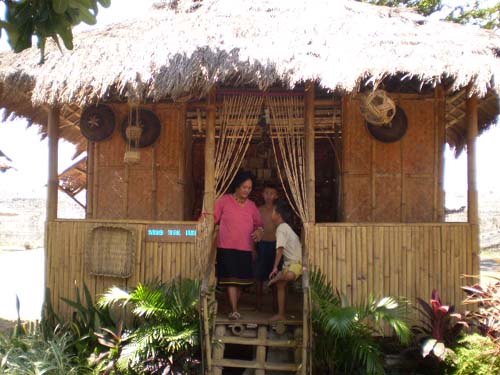Apr 14, 2025
Apr 14, 2025
by Rubelyn Yap
Till a decade ago, it was not easy for a Subanon (a tribe in the Philippines) to go to the 'poblacion' (centre of the town) without being looked down upon or called names like 'taga-bukid', 'gali', 'ignorante' (meaning people of the mountains and ignorant) by the local populace. But this did not deter Rusviminda Estabay Perez, 50, from venturing into the city, first to study and, later, to chase her dream for a better life for her family. Like any other of her tribe, in her younger years Perez was hesitant to tell people that she was a Subanon. However, when she went to school, the most important lesson she leant there was to be proud of her heritage. Then, even if people made fun of her, she would proudly declare that she was a Subanon. Even though she could only complete her education till third year high school, Perez is proud that she can read and write
The Subanons - a name derived from the word 'suba' or river - were known as the river people. According to historians, they once roamed the seas in great numbers and were the original inhabitants of the Misamis Occidental province of which the Ozamiz City is a prominent city. Gradually, the Subanons had to retreat to the mountains as the sea pirates of Lanao started making forays along the coastal areas in search of slaves.
When the Ozamiz city government began an initiative to provide livelihoods to the indigenous people in the region, Perez made use of the opportunity and became a non-formal teacher of sewing and basket-making - traditional crafts of her tribe
Then, in 2003, in order to sustain a large family (they have 15 children), Perez and her husband moved to the city and began working for the City Tourism Office, giving demonstrations of basket-making.
Their work has flourished. The couple showcases authentic Subanon craft at national expositions across the Philippines. The couple has received accreditation from the Department of Trade and Industry. Perez also sells products made from rattan (species of palms native to tropical regions of Africa, Asia and Australasia).
During the 250th anniversary of Fort Santiago - Ozamiz City's greatest historical treasure - last year, the Spanish fort - built in 1756 - was restored. The city government set up a Subanon village in its premises, where people may experience and understand the authentic culture of the tribe. Perez manages the activities in this village and also gives live demonstrations in the art of basket- making. Today, she sustains her family with an income from this small village and the bulk orders she secures for her products.
In addition to the village, the city government also promotes the Subanon culture through different expositions and by organizing the annual 'Subayan keg Subanon' Festival in July. According to Perez, through such measures the lowland people have been able to understand the tribe better and celebrate them as the original settlers of the city.
After living in Ozamiz City for the last four years, Perez says she is very happy that the lowlanders have accepted her. She now hopes that the new generation of Ozamisnons will be proud of their heritage and unite to promote the city's tourism potential.
As per National Indigenous People survey in 1997, the Subanon tribe has a population of 75,000. Their chief occupation is farming, and they practice "slash and burn" agriculture. Their homes are typically rectangular, raised on stilts, with thatched roofs and generally situated on hillsides or ridges overlooking the family fields. Every three or four years, the Subanon move to a new location to clear more forest for fields.
Male Subanons usually wear a lambong (long pants) and a sinupa (a long- sleeved shirt). The women wear a tapis (skirt) with a kasinupo (blouse). Both men and women wear turbans.
Interestingly, the Subanon have virtually no division of labor based on gender. Men and women work in the fields together and men cook and care for the children when necessary. They have little social stratification. Everyone is on an equal level in the Subanon society because everyone has the same occupation and almost the same economic level and lifestyle.
Despite living in the city, Perez has kept up with some traditional Subanon practices like Kinobata (christening), Hikayan (a ceremony after christening, where people eat and dance together to welcome the new child into the world) and Paningan (held during harvest season). She also goes up to the mountains every weekend to visit her children.
04-Nov-2007
More by : Rubelyn Yap